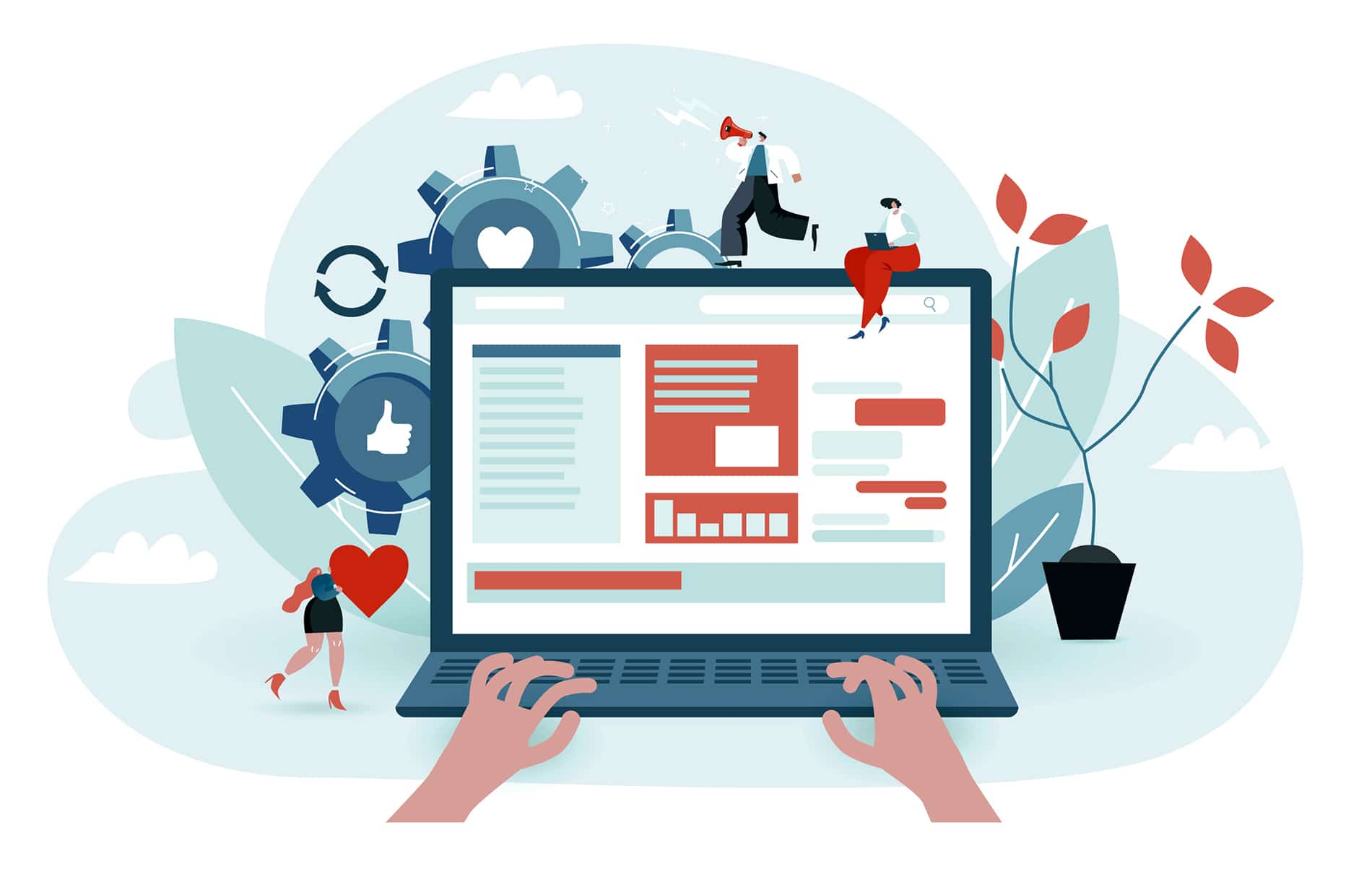Understanding the Importance of WCAG Compliance
For many organizations accessibility is a priority. Managers will seek out service solutions that are WCAG compliant out-of-the-box so that they don’t have to make adjustments on their own to ensure accessibility.
With TeamDynamix portals, you can be confident that you are meeting all requirements. For example, we include features like descriptive links and alternatives to multimedia- both of which are required for compliance.
What is WCAG Compliance and Why Does it Matter?
WCAG stands for Web Content Accessibility Guidelines and these guidelines were created by the Accessibility Guidelines Working Group. They include a set of documents that explain how to create web content that is accessible to those with disabilities. The intended audience for these guidelines includes anyone with a job related to web content development.
These WCAG standards are composed of 12-13 guidelines that are organized under the 4 principles of perceivable, operable, understandable and robust. Each guideline is tested under certain ‘success criteria,’ and in order to meet the compliance, these criteria need to be fulfilled.
Compliance with WCAG is essential for several reasons. First and foremost, it promotes inclusivity and ensures equal access to information and services for all users, regardless of their abilities. It aligns with the principles of universal design, which emphasizes creating products and environments that are accessible to the widest possible audience.
Additionally, WCAG compliance has legal implications in many countries. Laws such as the Americans with Disabilities Act (ADA) in the United States and the Equality Act in the United Kingdom require organizations to make their digital content accessible to people with disabilities. Non-compliance can lead to legal consequences, including fines and lawsuits.
From a business perspective, WCAG compliance also offers various benefits. It expands your potential customer base by making your website accessible to a larger audience. It enhances the user experience for everyone, not just individuals with disabilities, by improving usability and navigation. Accessible websites are often more search engine friendly, which can improve organic rankings and drive more traffic to your site.
When it comes to a self-service portal, WCAG compliance is crucial.
Self-service portals are often used by customers to access information, make transactions, or interact with support services. If these portals are not accessible, individuals with disabilities may face barriers in accessing essential services, leading to frustration and potential loss of business.
By designing and developing a WCAG-compliant self-service portal, you ensure that individuals with disabilities can independently navigate, understand, and interact with the content and functionalities. This may involve incorporating features such as keyboard accessibility, providing alternative text for images, ensuring proper color contrast, offering captioning and transcripts for multimedia content and designing forms that are easy to understand and complete.
WCAG and TeamDynamix
TeamDynamix wants end-user portals to be available to everyone, which means making them as accessible as possible.
Our portal is WCAG 2.0 AA compliant out-of-the-box which will allow your organization to meet accessibility standards immediately- there is no additional work to be done to reach certain standards.
Even when you make changes within the portal, everything will automatically continue to meet requirements.
Organizations that provide a website that is accessible to all inherently show their users that each of them is important, which is one way to stand out.
If you’re interested in checking out the stellar portals of some of our customers that are WCAG 2.0/508 compliant, you can do that here.
Portal Best Practices
In addition to putting a focus on accessibility, there are two other best practices we would like to point out: making sure your portal is easy to use and building a useful knowledge base.
Having a portal that is easy to use, own and operate means making sure it looks and feels welcoming. This includes making it easy to navigate, including graphical elements that users will recognize, and using simple language to communicate with the user.
If you want people to use your portal it should look and feel welcoming.
Your portal needs to be easy to navigate, include graphical elements (i.e., branding, images, etc.) that your users will recognize, and you should use jargon-free language to get your message across. For example, a button that says “Get Help” will likely perform better than a button that says “Submit Ticket.” Be clear and direct with all of your calls to action and messaging.
In terms of creating self-service portals, they should be easy to build and easy to maintain. This means no specialized technical skills like coding or scripting should be needed to get your portal up and running, and you shouldn’t need dedicated resources to manage it either. Anyone in your organization should be able to log in with their credentials and make changes, as needed, to better serve the users of your portal.
With a highly configurable portal, you can be strategic in your efforts as well—first focusing on frequently asked questions and those issues that contribute to a high volume of incoming help desk tickets.
Over time, you’ll be able to grow and evolve your end-user portal into a valuable resource that people will learn to turn to first, freeing up your IT staff to focus on higher-priority tasks and projects.
All-in-all, an engaging portal enables you to deliver on the promise of high-quality ITSM for your customers and employees.
Building your knowledge base is equally as important, as it saves a huge amount of time and money.
With up-to-date information and quick links to popular content, your knowledge base will be a valuable resource. However, it is only as good as the content that it contains, so it’s crucial to follow industry best practices, like Knowledge-Centered Service (KCS®).
Here are a few ways KCS positively impacts an organization:
- Helps to lower inbound call volume.
- Increases customer satisfaction.
- Provides customers with the answers they need when they need them.
- By crowdsourcing knowledge, you can keep your content accurate and up to date.
By adopting KCS, you can not only improve customer satisfaction but dramatically reduce the per-incident cost incurred by IT and reduce the volume of issues and requests coming to the help desk, allowing IT to reallocate technicians to higher-priority tasks and projects.
If you’d like to read more about portal best practices and benefits, check out: Reduce Strain on IT Technicians with Knowledge-Centered Service and ITSM Self-Service Portals

